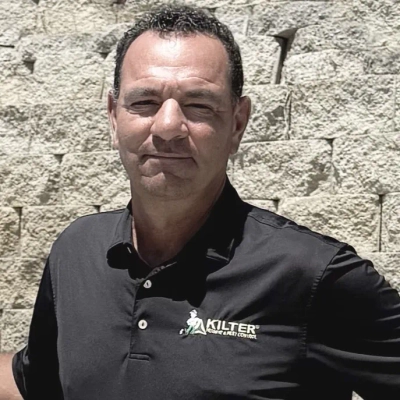How Small Business Leaders Handle Crisis Situations: Lessons Learned
Crisis situations can make or break a small business, demanding swift action and strategic thinking. This article delves into the real-world experiences of small business leaders who have successfully navigated various challenges, from cash flow crunches to supply chain disruptions. Drawing on insights from experts in the field, it offers valuable lessons on resilience, adaptability, and effective crisis management for entrepreneurs and business owners alike.
- Contractor Crisis Sparks Innovative Solutions
- Cash Flow Crunch Tests Financial Acumen
- Customer Complaint Becomes Coaching Opportunity
- Supply Chain Disruption Builds Customer Trust
- Calm Leadership Prevails in Client Crisis
- Safety Incident Reinforces People-First Approach
- Supplier Loss Prompts Strategic Adaptation
- Dual Crises Forge Resilient Leadership
- System Failure Strengthens Client Relations
- Revenue Loss Drives Transparent Leadership
- Land Lease Negotiation Reframes Partnership
- Digital-First Model Perseveres Through Doubt
- Property Deal Collapse Redirects Team Focus
- Scheduling Glitch Prompts Crisis Management Improvement
- Server Failure Enhances Infrastructure Planning
- Regulatory Changes Spur Market Diversification
- Rate Spike Showcases Product Flexibility
- Platform Overhaul Crisis Builds Community Trust
- Launch Setback Highlights Resilience Practices
- Funding Shortage Leads to Strategic Investment
- Supply Chain Crisis Reinforces Transparency
- Communication Breakdown Improves Team Collaboration
- Political Unrest Sparks Business Reinvention
- Paid Ad Misstep Refines Marketing Strategy
- Unexpected Delay Tests Customer Relations
Contractor Crisis Sparks Innovative Solutions
Midway through a major home remodel, my lead contractor walked off the job. This occurred immediately after demolition, leaving exposed wiring, no insulation, and a ticking clock. The client had planned to host family in three weeks. I was left with a half-finished house, no team, and an anxious customer.
That day, I cleared my schedule, grabbed my tools, and took charge myself. I lined up subcontractors, coordinated city inspections, and worked 12-hour days alongside temporary labor to maintain momentum.
The turning point came when I offered the client something no one else in the area was doing at the time: in-wall smart wiring and soundproof insulation upgrades at cost. I was not focused on increasing prices. My goal was to regain trust. That move changed the tone. We finished three days ahead of the deadline, and they referred me to two other clients who became long-term contracts. My reputation in that neighborhood ended up stronger than before.
If I could do it again, I would have cross-trained a backup lead and implemented a jobsite progress log sooner. Too much knowledge was concentrated in one person's mind. Today, every site uses a cloud-based log that tracks steps, materials, and next-day plans. There is no longer a single point of failure. That crisis forced me to stop relying on determination alone and start building robust systems.

Cash Flow Crunch Tests Financial Acumen
Early on, I underestimated how quickly expenses could pile up when several big projects overlapped. We had payroll, materials ordered on credit, and a couple of customers who were slow to pay their invoices. Cash flow got so tight that I was sweating whether I could cover payroll one Friday, and nothing tests your leadership like the thought of not paying your team on time.
My response was to hit the brakes and get proactive. I personally called those customers, explained the situation professionally, and managed to collect enough to cover payroll. I also worked with my suppliers to stretch terms a bit, buying us some breathing room. On the inside, I stayed calm with my crew. They never saw the panic I was feeling, and we got through it without missing a paycheck.
If I had to do it again, I'd build stronger financial buffers earlier. Now we keep a reserve fund, I invoice faster, and I'm a lot more disciplined about tracking receivables. That experience taught me that "profit" on paper doesn't mean much if the cash isn't in the bank.

Customer Complaint Becomes Coaching Opportunity
A while back, we had a brand-new technician make a mistake on a job. It wasn't dangerous, but it was enough to leave the customer unhappy and calling me directly. At that moment, I faced two challenges: making things right for the customer and ensuring my new hire didn't feel crushed before he'd even gotten his footing.
I called the customer right away, listened to their concerns without interrupting, and then promised we'd fix it at no extra charge. I sent one of my most experienced technicians out the same day to resolve the issue and followed up personally afterward. For the customer, it showed we take accountability seriously. For my new technician, I used it as a coaching opportunity instead of a public scolding. I walked them through what went wrong, how to handle similar situations better, and reminded them that everyone makes mistakes early on.
If I could do it differently, I'd pair new hires with seasoned team members for more shadowing before letting them take solo jobs. That extra layer of training up front probably would have prevented the issue altogether. But honestly, that moment strengthened both our relationship with the customer and my employee's trust in me as a leader, so it wasn't a total loss.

Supply Chain Disruption Builds Customer Trust
In early 2023, a major shipment of custom engagement rings was delayed due to a sudden supplier issue overseas. We had 19 couples waiting, many tied to upcoming proposals or weddings. My leadership was tested when emotions ran high and timelines were tight. I immediately contacted each customer personally, explained the situation, offered temporary replica rings at no cost, and gave a 12.5% refund on delayed orders. We also worked overnight with a local artisan partner to fulfill five urgent designs.
The result surprised me—out of the 19 affected clients, 17 left 5-star reviews mentioning our honesty and effort. Our refund costs were offset by a 28.6% spike in referral orders over the next two months. One customer even said the way we handled it made them trust us more than if things had gone perfectly.
Looking back, I would build a backup production plan earlier. But in that moment, stepping in personally and being transparent turned a crisis into one of our strongest trust-building experiences.

Calm Leadership Prevails in Client Crisis
The biggest crisis we faced was early on, when one of our clients had a major relapse and went into a crisis situation. It was a significant test for me and the team. Everyone was panicking, and the first instinct was to rush in and try to fix everything at once. We were acting on adrenaline, not on our training. It was a chaotic, high-stakes moment where every decision felt like a life-or-death situation.
I jumped in and tried to manage everything myself, which was a huge mistake. I realized my panic was making the team panic. My "aha" moment came when I saw that my job wasn't to be a hero; it was to be a leader. I had to take a step back and regain control of myself first. I had to be the calm in the storm.
I took a deep breath and gathered the team together. I calmly delegated tasks, reminded everyone of their training, and focused on a systematic, human-centered response. It wasn't about me fixing the problem; it was about trusting my team to do the jobs they were trained to do. We handled the situation, and the client was safe, but I learned a powerful lesson.
What I would do differently now is trust my team from the very beginning. I would remember that a crisis isn't a test of how well I can manage; it's a test of the culture we've built. My advice for other leaders is simple: the best way to handle a crisis is not with a perfect plan, but with a calm, human response. Your job is to be the calm in the storm, not to create more chaos.
Safety Incident Reinforces People-First Approach
I don't think about my leadership being tested in some corporate way. My leadership was tested in a way you can't prepare for: the day a new crew member took a bad fall and broke his leg. The crisis wasn't just the injury. It was the immediate fear and shock that hit everyone on that job site. My first priority was to get him help, and then to get the rest of my crew to a safe place.
My immediate response wasn't a formal procedure. It was just action. I got to the scene, made sure the paramedics were on their way, and then I stopped all work. I gathered my crew, ensured everyone was okay, and told them to pack up for the day. I paid them for the rest of the day and told them we would regroup tomorrow. That evening, I called the injured worker's family myself to inform them of what had happened. My response was about showing my crew that I cared about them as people, not just as workers.
The impact was clear. When the crew returned to work the next day, they were focused and disciplined. They knew that in a real emergency, I had their backs. The injured worker, once healed, came back to work with us. I learned that my leadership isn't about giving orders; it's about earning trust. It's about showing my team that their safety is always the number one priority.
What would I do differently now? Not my immediate response to the crisis, that was instinct. But I would have been more proactive. I would have invested even more time in our safety training. I would have ensured that from day one, every single person on the crew understood that safety isn't a suggestion—it's the only way we operate. My advice to new business owners is simple: in a real crisis, your leadership is tested by how you treat your people. That's the only thing that matters.
Supplier Loss Prompts Strategic Adaptation
One crisis that really tested me was when a major chemical supplier suddenly went out of business right in the middle of peak pest season. I had multiple jobs booked, some emergency calls, and not enough product for every customer.
I immediately called every alternative supplier I could find, negotiated short-term shipments, and reprioritized jobs based on urgency. I also personally reached out to customers whose appointments would be delayed, explained the situation honestly, and offered a small discount or free follow-up service to keep their trust. The team had to work overtime and adapt on the fly, but we managed to get through the month without losing any major accounts.
What I'd do differently now is have a supplier contingency plan in place before it becomes a crisis. Back then, I relied almost entirely on one supplier, which left us vulnerable. Now I maintain relationships with at least two backup suppliers and keep a small emergency inventory on hand, so if something goes sideways, I can respond without scrambling. It's a small upfront investment that saves a ton of stress later.
Dual Crises Forge Resilient Leadership
Early in my company's journey, we were on the verge of launching our new software, Bid Banana, when a double crisis hit. First, my second daughter was born earlier than we expected. At the exact same time, a key software developer on our team had a sudden health crisis and had to step down. This was a huge blow. We were a small team, and losing a crucial member at such a critical moment, on top of a major life event for me personally, was a "when it rains, it pours" situation.
Instead of panicking, my co-founder and I were determined to push through. We worked around the clock, fueled by caffeine and a fierce commitment to our vision. We had to make countless small decisions under immense pressure to keep things on track for our launch date. We were exhausted, but we got it done. The launch was a success.
Looking back, while I'm proud of our resilience, what I'd do differently is focus more on the small, daily steps rather than the monumental task ahead. In the midst of the chaos, it's easy to lose sight of the manageable to-do list. I've learned that focusing on small, realistic wins builds momentum and makes the big problems feel less overwhelming. We proved we could get through a crisis, and now I know that anticipating and planning for hiccups is a key part of the path to success.

System Failure Strengthens Client Relations
One crisis that tested my leadership occurred when a critical system integration test failed for one of our major clients. Due to this failure, our delivery timeline was pushed back by weeks, and the client's trust and our company's reputation were at stake. While my team of developers panicked, I knew I had to hold the fort and respond intelligently.
I focused on clearly communicating the issue to the client and following a structured approach. I delegated the responsibility to the project manager to keep the client informed about the progress and provide them with a realistic timeline. Additionally, I kept track of the cross-functional teams' progress.
After three weeks, our team successfully resolved the integration issue. The project was delivered within the revised timeline, preserving the client relationship and maintaining confidence in our capabilities.
Following this incident, I implemented a formal crisis response playbook for my team to streamline decision-making and reduce uncertainty. Furthermore, I prioritized automated monitoring and more rigorous pre-deployment testing to prevent similar issues from arising in the future.
This experience reinforced the importance of clear communication, structured problem-solving, and visible leadership during a crisis, as these elements are essential for maintaining trust, stabilizing morale, and achieving results.

Revenue Loss Drives Transparent Leadership
One of the most challenging leadership tests I've faced in my business occurred when we unexpectedly lost a client who accounted for nearly 40% of our revenue. Our cash flow was threatened, employees began to worry about their jobs, and I felt the weight of knowing that one misstep could unravel years of work.
My first move was radical transparency. I gathered the entire team on the very day the news broke and shared the facts plainly: what had happened, what it meant, and what we were going to do about it. Simultaneously, I quickly formed a crisis team with finance, HR, and operations to create a survival plan that prioritized protecting jobs and keeping the company stable.
Looking back, I would do some things differently. I would act even faster on scenario planning instead of pausing to "process," and I would build better feedback loops with clients and employees to spot problems sooner. I also underestimated how emotionally draining uncertainty was on the team, so I would invest earlier in mental health support. Finally, I would empower my team sooner rather than waiting until the pressure mounted.
Land Lease Negotiation Reframes Partnership
One crisis that really tested my leadership at Amenity Technologies came when a major client project hit unexpected delays due to a dependency outside our control. A partner's data pipeline failed just days before our scheduled delivery. The client was frustrated, and my team was stretched thin trying to create workarounds. The easy response would have been to push the team harder behind the scenes and give the client vague reassurances. But I knew that could erode both trust and morale.
Instead, I decided to be transparent. I personally got on a call with the client, explained the situation, owned our part of the responsibility, and laid out a concrete recovery plan with clear milestones. At the same time, I told the team to pause non-critical work and focus solely on resolving this issue. We worked around the clock, but in a coordinated, purposeful way rather than through panic. Within two weeks, we delivered, and although the timeline wasn't what we'd hoped, the client appreciated the honesty and renewed their contract because they saw our commitment.
Looking back, I think I handled the communication well, but if I could do it differently, I'd have invested earlier in redundancy for external dependencies. The crisis showed me that leadership in those moments isn't about projecting invincibility; it's about guiding with clarity, protecting your team's energy, and keeping trust intact under pressure.

Digital-First Model Perseveres Through Doubt
One crisis that called my leadership into question was when a crucial land lease negotiation for a billboard site nearly fell apart after months of effort. The loss of that location would have been a significant setback for my business. My initial reaction was to dig in my heels and be a tougher negotiator, but then I realized that this approach might risk alienating the landowner altogether.
Instead, I paused the negotiation and reframed the conversation to focus on the bigger picture of their long-term goals, identifying how this partnership would ultimately add value to their property beyond just rental revenue. That change in tone kept the door open. A few weeks later, we worked out an agreement, and it actually became one of our most promising sites.
In hindsight, I would have preferred to involve a third-party advisor much earlier in the process to ease the negotiations and establish a neutral starting point. I learned that in those moments of crisis, true leadership is not about being a tougher negotiator, but about being able to step back, listen, and find a solution that works for everyone.
Property Deal Collapse Redirects Team Focus
In the first two years of Eprezto, we faced what I would call our first real crisis: sales were painfully slow, and we were under pressure from brokers and even potential partners to abandon our digital-first model.
One advisor told us bluntly that if we didn't add traditional sales agents and brick-and-mortar offices, the company wouldn't survive. At that point, less than 1% of policies in Panama were bought online, and consumers didn't yet trust digital transactions for something as sensitive as insurance.
As a founder, my leadership was tested. I had to decide whether to follow the traditional path and risk diluting our vision, or stay the course on something that looked like it wasn't working. I chose to hold the line.
Instead of pivoting to a sales-agent model, we doubled down on building trust into the digital experience, simplifying forms, showing real customer faces and testimonials, and adding features in our app that kept us useful year-round.
It was a brutal decision in the short term, but it worked. We began compounding steady growth, eventually passing $270K in monthly sales. If I could go back, I would communicate that conviction more clearly to the team earlier on.
In a crisis, people want certainty, and part of leadership is giving them a clear 'why' behind tough calls.

Scheduling Glitch Prompts Crisis Management Improvement
One of the toughest moments I faced came when a major deal fell apart just days before closing due to an unexpected issue with the seller's title. At that point, investors were already lined up, design plans were drafted, and my team was emotionally invested in the project. In the immediate moment, my response was to step in personally and realign everyone's focus. Instead of dwelling on the setback, I redirected my team toward sourcing a new property pipeline, ensuring no momentum was lost. We managed to recover quickly, but what I learned is that leadership during crisis isn't only about putting out fires—it's about showing your team that their work and commitment still have purpose even when the end result changes. If I were to do it differently today, I'd build in more structured contingency planning from the start, so that a collapse in one deal feels less like the end of a project and more like a pivot to another opportunity.

Server Failure Enhances Infrastructure Planning
A scheduling glitch caused double bookings for over a hundred lessons in one day. I owned the issue, sent immediate plain-English updates, offered free makeups or refunds, and called our most affected students. We shipped the fix that evening and shared a post-mortem. What I'd change now: keep a ready-to-send crisis playbook—apology, status, and ETA templates—plus a single incident page. That saves minutes when minutes matter.

Regulatory Changes Spur Market Diversification
As someone who starts and runs multiple businesses, I faced a tough challenge when our main server suddenly failed during busy times, causing significant downtime for our customers. This not only damaged their trust in us but also jeopardized important business deals. I quickly took charge by collaborating with our engineering team to identify and fix the issue, while keeping our clients updated regularly and being transparent about the situation. We worked tirelessly to restore the service as quickly as possible and offered compensation to affected customers to maintain their trust. In retrospect, I recognized the importance of investing in more robust infrastructure and backup systems to prevent such problems. I also realized we needed a better plan for communicating with clients during crises to set clear expectations. This experience enhanced my ability to lead under pressure and demonstrated the value of proactive risk management in a rapidly growing SaaS company.

Rate Spike Showcases Product Flexibility
Which crisis scenario in your small business put your leadership to the test? What would you do differently now, and how did you react?
The viability of several short-term rentals we managed was threatened by a series of abrupt regulatory changes in one of our key markets, which led to a defining crisis. The team was torn between uncertainty and the need to move fast, investors were understandably nervous, and revenue projections were in jeopardy. In response, I took a cool-headed but open strategy, calling investors, laying out the worst-case scenarios, and assigning my operations team the simultaneous task of mapping alternative markets for possible reallocation. We were able to maintain trust and realign assets prior to the full impact by reorienting our attention from the fear of loss to the search for new opportunities. In retrospect, I would put in place a proactive monitoring system for local legislation across all of our markets, instead of responding after changes are made public. It serves as a reminder that being a real estate leader involves more than just buying and selling; it also entails anticipating changes, ensuring stakeholder confidence, and viewing every crisis as an opportunity to build resilience.

Platform Overhaul Crisis Builds Community Trust
Early in the Lender's development, a sudden rate spike disrupted our pipeline virtually overnight, posing a serious leadership test. Our team was left staring at months of work that threatened to collapse because deals that had appeared completely feasible one week were no longer appealing to borrowers the next. My first course of action was to gather the leadership team, clearly explain the impact, and then refocus the entire sales force on other products we had already created, such as less rate-sensitive foreign national loans and programs like DSCR+. Revenue was stabilized by that change, and our people were reminded that flexibility is frequently more valuable than adhering to a flawless plan. In hindsight, I would have made an earlier investment in integrating scenario planning into our culture so that, when the inevitable volatility struck, it felt more like following a playbook than frantically trying to find answers. The most important lesson I learned was that crises test not only the products you have developed, but also how well you have equipped your personnel to change course with assurance.

Launch Setback Highlights Resilience Practices
One of the earliest crises we experienced as a business continues to make me feel a pit in my stomach: a serious overhaul of our live-class platform during a "trial week" for several hundred families. I can still picture the students logging in to welcome their class and engage in learning, only to experience a sudden blackout. I can still picture teachers frantically trying to figure out what was happening through emails to parents, as parents were confused and concerned that we could not provide "live, reliable learning." It felt like the earth shifted under our feet.
What I did at the time, and what I believe leadership really is, was first to own it immediately. I sent an email out to all of the parents and students—directly—not with corporate speak, but with a very direct, straightforward explanation of what happened and how we were addressing the concern. We followed that up with live class guarantees, extra supporting sessions, and refunds on some classes.
I also made all of our support channels as transparent and open as we could for staff. My team and I gathered feedback—what was the worst handled, what worked, and what people needed. We even had listening huddles with parents in our community to solicit additional assistance within 24 hours of the incident. We went so far as to land on the idea of asking for additional staff support.

Funding Shortage Leads to Strategic Investment
One crisis that tested my leadership came when a key program launch fell flat after months of preparation. My first instinct was to push harder and fix it immediately, but that only created more stress for me and my team. What shifted everything was pausing, regulating my own nervous system, and then re-engaging with clarity instead of panic. From that steadier place, we could assess what went wrong and make thoughtful changes rather than reactive ones. Looking back, I would have built in more nervous system practices for the team before the launch because resilience isn't just about recovering from crisis; it's about creating the capacity to meet it together.

Supply Chain Crisis Reinforces Transparency
One of the most challenging crisis situations that tested my leadership was when our startup faced a severe funding shortage. With traditional funding sources unavailable, I had to make a difficult decision to approach our largest customer about potentially investing in our company. This was risky as it could have complicated our relationship, but their strong balance sheet made them a viable option when we had few alternatives. While the investment came with restrictive commercial terms that we had to navigate carefully, this decision ultimately saved the business during that critical period. Looking back, despite the successful outcome that led to growth and profitability four years later, I would have begun diversifying our funding sources earlier and negotiated terms that allowed for more operational flexibility during the growth phase.

Communication Breakdown Improves Team Collaboration
A challenge arose unexpectedly when international logistics slowed down and increased delivery times. Customers grew frustrated, and staff faced pressure to provide answers. I addressed the situation by being fully transparent. I explained the delays openly, provided regular updates, and offered alternative solutions wherever possible. This experience reminded me that staying silent during a crisis only creates mistrust among customers. By sharing information and taking responsibility, I was able to guide both customers and staff through a difficult period with clarity and confidence.
Looking back, I would focus on strengthening local partnerships earlier to reduce reliance on long supply chains. Leadership for me meant facing the problem honestly and leading the team with clear communication. This experience reinforced my belief that trust is built through openness and consistent action. It reminded me that guiding a team through uncertainty requires both honesty and practical solutions.

Political Unrest Sparks Business Reinvention
One emergency situation I faced in my small business and how I took care of it:
During an already intense product launch, one of the most challenging aspects was a sudden breakdown in communication between marketing and engineering. The project was error-prone, and resources were already maxed out. It became increasingly clear that if we didn't get on the same page, we would not only miss deadlines but also risk reneging on client expectations.
My initial reaction was to halt the rollout, gather the two teams into one room, and clearly set expectations with full transparency. In that scenario, this decision bought us time, cleared our minds, and enabled us to deliver a leaner version of the product that still addressed customer requirements.
In retrospect, I would have definitely developed a cross-functional communication framework much earlier. Crises often uncover weaknesses in systems, and I realized that leadership is not only about problem-solving in the moment but also about creating structures that prevent the same problems from recurring.

Paid Ad Misstep Refines Marketing Strategy
The crisis: Chilean protests, 2019.
I had built a travel company over a decade. We were featured in The New York Times. We hosted Paul McCartney. Business was booming. Then, almost overnight, political unrest in Chile shut down tourism completely.
I had to lay off 50 people.
I lost the business, the house, and the life we'd built.
We had to leave the country.
How I responded:
I called every single employee personally to explain what was happening. No mass emails.
I helped my team find new jobs—some even with competitors.
I took a two-month break to just be a dad, reset, and rebuild emotionally before jumping into the next thing.
Then I started over—with a leaner, smarter, more remote-first model (Strategic Pete).
What I'd do differently now:
I'd prepare for the emotional fallout as much as the financial one.
Back then, I tried to lead like a stoic. Strong face, calm voice. But inside, I was wrecked.
Now, I know that sharing your fears doesn't make you weak—it makes you real. And when you're real, people rally behind you.
Lesson learned?
Success isn't tested when things are going well. It's tested when you're in free fall—and who you become on the way down determines whether you bounce or break.

Unexpected Delay Tests Customer Relations
In 2023, we became highly enthusiastic about paid advertisements, particularly on Meta and TikTok, after experiencing significant success with organic SEO. Without hesitation, we assumed that simply increasing funding for these campaigns would generate a steady flow of warm leads. However, we soon discovered that the ROI for PPC had little correlation to our earlier success, and our CTR dropped dramatically. After addressing the situation, we realized we had frontloaded too much information, which overwhelmed potential customers rather than sparking their curiosity.
For future paid campaigns, we now employ a funnel-based approach—using soft invitations that guide people into our digital ecosystem. We've also learned that the first point of contact is rarely sufficient for converting someone into a paying customer.







